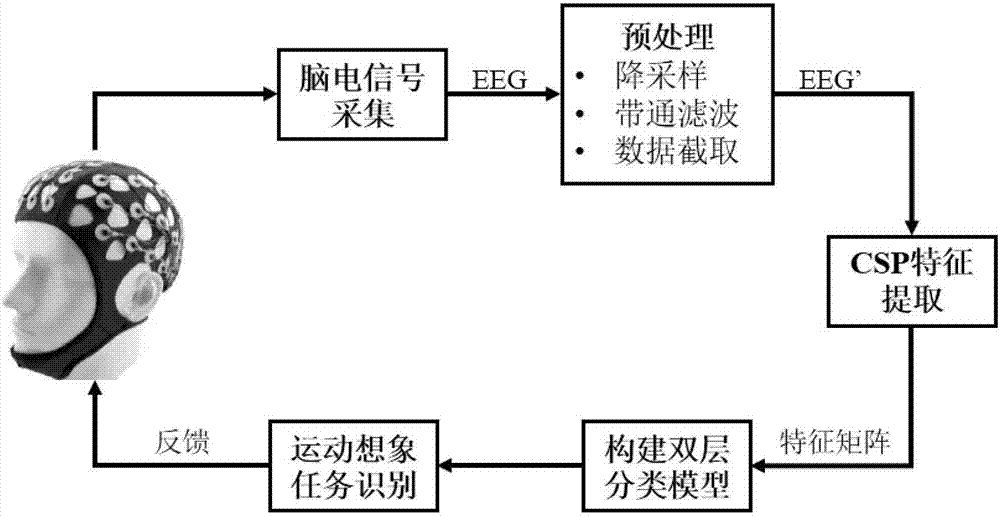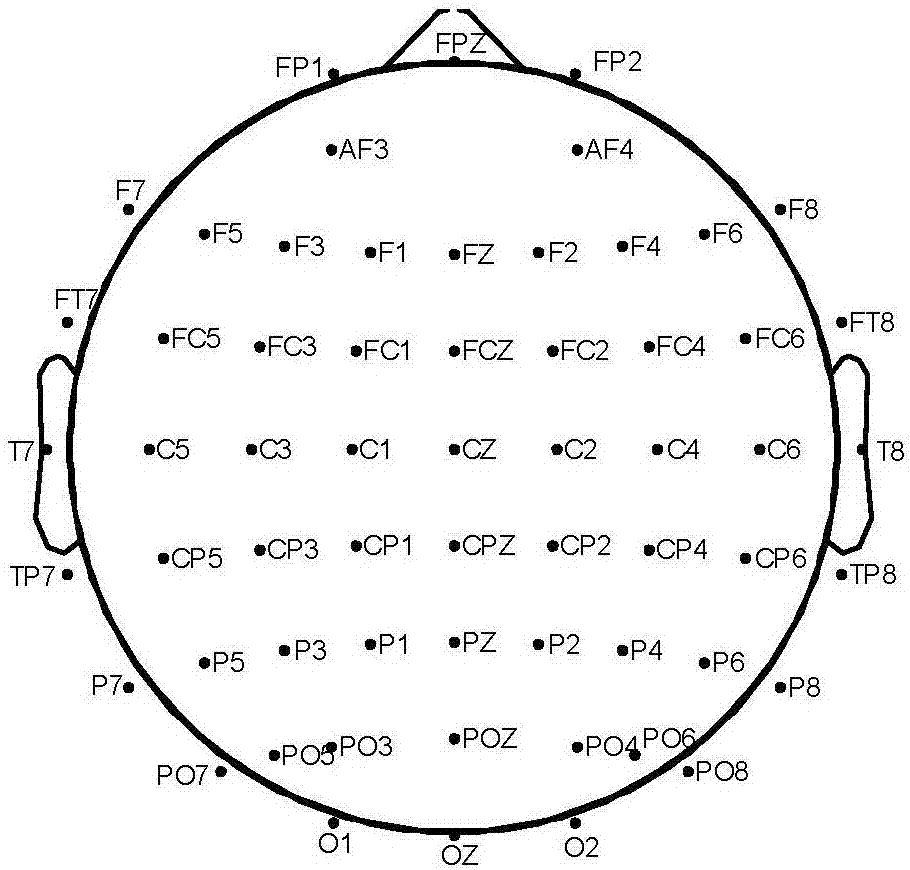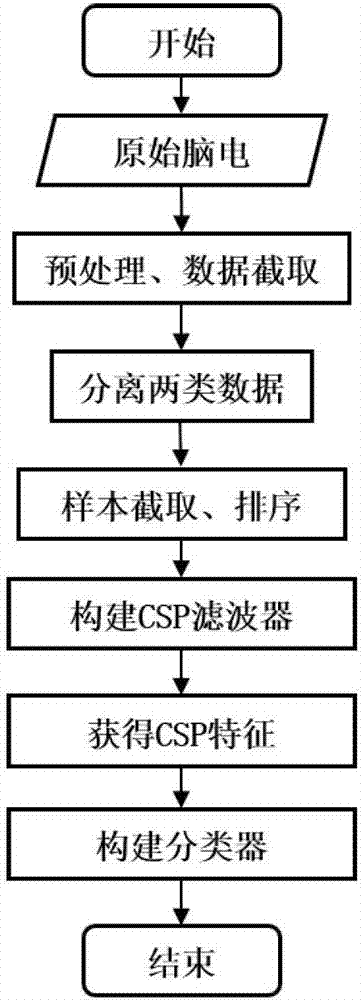Motor imagery double-layer classification identification method with low false triggering rate
A technology of motor imagery and classification recognition, which is applied in the field of classification recognition, can solve problems such as affecting the degree of participation, wasting patients' rehabilitation treatment time, and users' wrong motor imagery habits, so as to suppress the occurrence of false triggering and improve the overall classification and recognition ability , the effect of improving the overall recognition performance
- Summary
- Abstract
- Description
- Claims
- Application Information
AI Technical Summary
Problems solved by technology
Method used
Image
Examples
Embodiment 1
[0043] The technical solution adopted in the embodiment of the present invention is: first collect the original EEG data of the subject under different task states, then preprocess the original EEG data, then extract features through the CSP algorithm, and combine the features belonging to different categories Combining, the classification recognition model is constructed through the support vector machine algorithm (Support Vector Machine, SVM), and finally the purpose of improving the overall classification recognition ability of the system is achieved by performing double-layer classification recognition on the same sample. figure 1 Yes A flowchart of the method, including the following stages:
[0044] 101: Collect 64-lead EEG signals of the same subject under different task conditions;
[0045] The different task conditions may be a target task, a rest task, or an interference task, etc., which are not limited in this embodiment of the present invention during specific im...
Embodiment 2
[0055] Combine below Figure 2-Figure 5 , calculation formula, and table further introduce the scheme in embodiment 1, see the following description for details:
[0056] 201: EEG signal acquisition stage;
[0057] In the embodiment of the present invention, the 64-lead EEG amplifier and Scan 4.5 acquisition system produced by Neuroscan Company are used, and the electrode caps equipped with it follow the international 10-20 system general standard, figure 2 Shown in is the location distribution of other electrodes excluding the electro-oculogram and the reference electrode. In the embodiment of the present invention, the position of the tip of the nose is used as a reference when the EEG is collected, and the center of the top side of the forehead of the brain is grounded. When collecting data, the impedance between all lead electrodes and the scalp is required to be kept below 5k ohms, and the sampling frequency is 1000Hz.
[0058] All subjects did not undergo pre-trainin...
PUM
 Login to View More
Login to View More Abstract
Description
Claims
Application Information
 Login to View More
Login to View More - R&D
- Intellectual Property
- Life Sciences
- Materials
- Tech Scout
- Unparalleled Data Quality
- Higher Quality Content
- 60% Fewer Hallucinations
Browse by: Latest US Patents, China's latest patents, Technical Efficacy Thesaurus, Application Domain, Technology Topic, Popular Technical Reports.
© 2025 PatSnap. All rights reserved.Legal|Privacy policy|Modern Slavery Act Transparency Statement|Sitemap|About US| Contact US: help@patsnap.com



